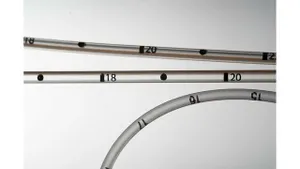Sign up for the PlasticsToday NewsFeed newsletter.
Sponsored By
Medical copolyester offers balance of properties
Material selection, especially in the medical market, has often required deciding between clarity, strength, lipid resistance, and processability, depending on the needs of the application, but a new medical grade of Eastman Chemical Co.’s (Kingsport, TN) Tritan copolyester offers all these characteristics in one material
Kate Dixon
February 19, 2009
2 Min Read

Eastman's Tritan medical grade is also BPA-free.
Material selection, especially in the medical market, has often required deciding between clarity, strength, lipid resistance, and processability, depending on the needs of the application, but a new medical grade of Eastman Chemical Co.’s (Kingsport, TN) Tritan copolyester offers all these characteristics in one material. “We’re uniquely positioned with copolyester,” says Scott Hanson, global industry leader medical for Eastman. “Our competition is the acrylics and polycarbonates. The balance of properties is the reason we developed the Tritan medical grade, not the fact that it’s free of BPA [bisphenol A], though it is another benefit.”Polycarbonate is known to be clear and strong, but has poor lipid resistance. PC grades modified for increased lipid resistance end up with a high molecular weight, making them difficult to process. Also, a secondary annealing step is often required for PC used in higher-heat applications. Acrylic lacks strength, comparatively, and becomes even more brittle upon lipid exposure.
In addition to being BPA free, the nonimplantable medical Tritan is halogen-free and resistant to cracking and degradation. There is a minimum color shift after gamma sterilization, as opposed to the larger color shift in PC, which typically has required the addition of blue colorant to cover the yellowing. Tritan also has higher molding heat capability, allowing for faster processing since it doesn’t require a longer cooling cycle.
Though the copolyester offers the same shrinkage and processability as PC, allowing processors to use it as a PC replacement in existing tools, Hanson believes the greatest near-term opportunities for the material exist in new product development for applications such as respiratory devices, IV system components, and blood therapy devices. Two grades are available now, one neat and one with a mold-release agent compounded in, but Eastman is looking at a third- or fourth-quarter release of an opaque grade and a high-flow grade for thinner walls and greater mold cavitation capabilities. —[email protected]
About the Author(s)
You May Also Like


